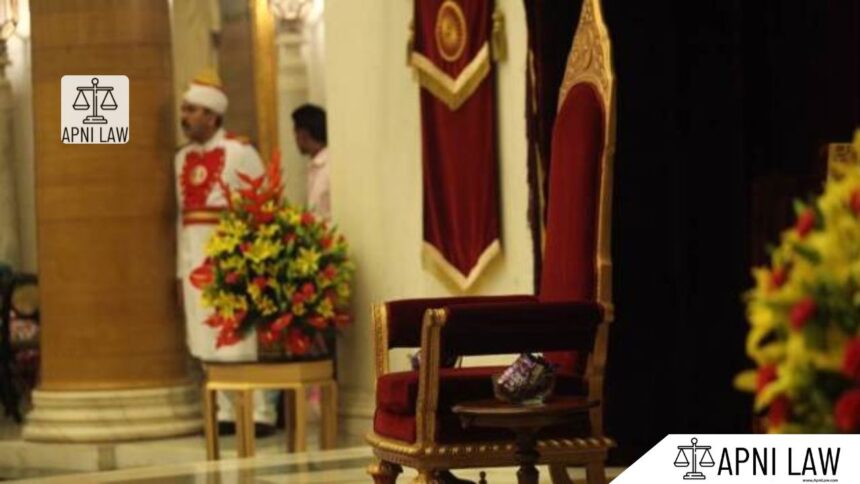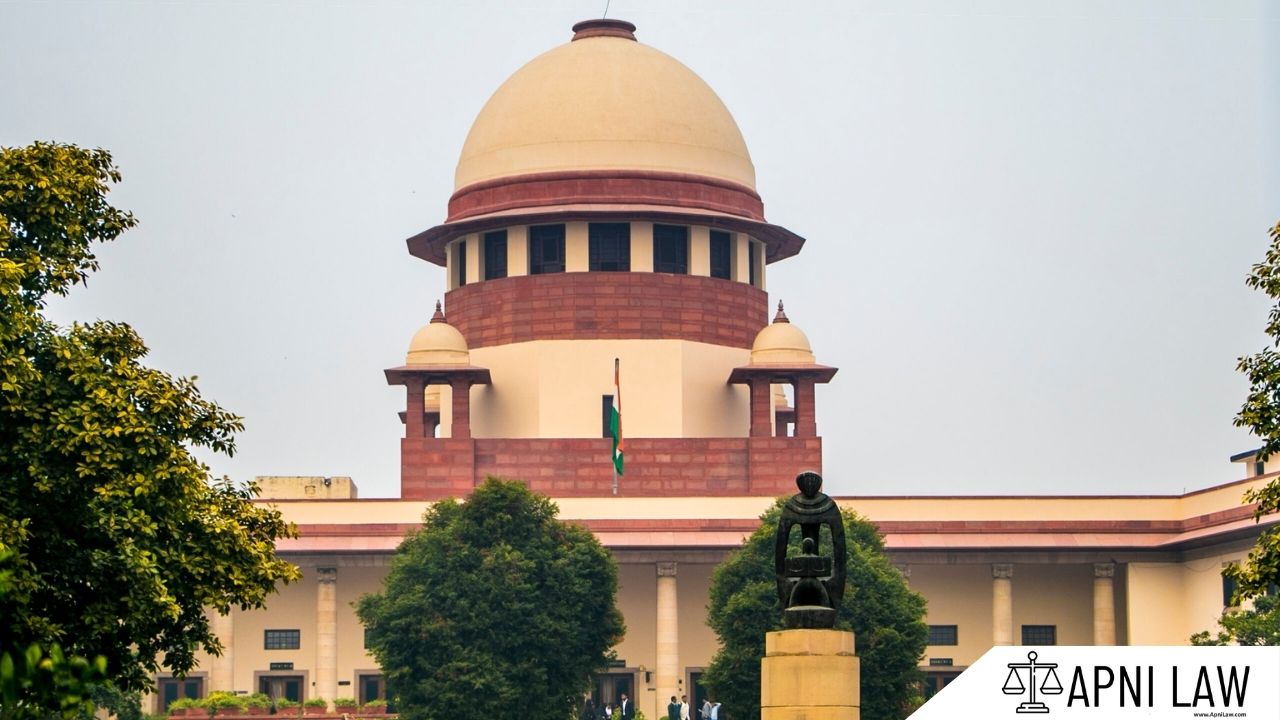Introduction
The impeachment of the President of India is the only method to remove the Head of the State before the expiry of the five-year term. The Constitution of India lays down a detailed process in Article 61. It ensures that the President, who represents the highest office, can only be removed in rare and exceptional circumstances. Unlike the resignation or natural end of tenure, impeachment is a constitutional safeguard. It acts as a check on the misuse of authority and protects the spirit of democracy.
The framers of the Constitution borrowed the idea of impeachment from the United States but gave it a narrower scope. While in the US, grounds such as treason, bribery, and high crimes are valid, in India, the ground is limited to violation of the Constitution. This strict requirement ensures the dignity of the office and avoids political misuse.
What is the Sole Ground for Impeachment?
The Indian Constitution provides only one ground for impeachment. That ground is the violation of the Constitution. No other reason, such as corruption, treason, bribery, or other criminal conduct, has been mentioned. However, the Constitution does not define what exactly amounts to a violation. This silence creates a broad space for interpretation by Parliament.
The Constituent Assembly debated whether to include multiple grounds. Members like Dr. B.R. Ambedkar insisted on limiting it to one ground. They feared that expanding the list could weaken the position of the President and invite frequent challenges. Hence, the Indian model is distinct and more restrictive than several other democracies.
Who Can Initiate the Impeachment Process?
Either House of Parliament can initiate the process. The Lok Sabha or the Rajya Sabha can move a resolution to prefer charges against the President. No state legislature or Union Territory assembly can participate. The responsibility rests only with Members of Parliament. This design highlights that the President is elected through an electoral college, but accountability lies only with Parliament.
The resolution to prefer charges cannot be casual. At least one-fourth of the members of the House must sign it. In addition, a written notice of fourteen days is mandatory before moving the resolution. These conditions prevent hasty or politically motivated moves.
How Does the Resolution Move Through Parliament?
The first House where the resolution is introduced debates and votes on it. To pass, it requires a two-thirds majority of the total membership of that House. This is not just two-thirds of members present and voting but of the entire membership. This high threshold ensures that only serious charges supported by overwhelming consensus move forward.
If the first House passes the resolution, the other House steps in. The second House conducts an investigation. This can be either directly or through a committee. During this stage, the President has the full right to appear, defend, and be represented. The process, therefore, has a quasi-judicial character.
After investigation, if the second House also passes the resolution with a two-thirds majority of its total membership, the President stands removed. The removal takes effect from the date the resolution is passed.
Why is the Procedure Considered Quasi-Judicial?
The process of impeachment is not purely legislative. It contains features of a judicial trial. Both Houses act like prosecutors and judges. The President is given an opportunity to defend and present arguments. The two-thirds majority in both Houses resembles the principle of beyond reasonable doubt in criminal law.
This character ensures fairness. It prevents Parliament from acting on political vendetta. It also safeguards the dignity of the President. The requirement of investigation by the second House adds another layer of balance.
Why Does the Constitution Keep the Threshold So High?
The President is the Head of the Indian Union. The office symbolizes unity and integrity of the country. Removing the President is not an ordinary political decision. Hence, the Constitution requires extraordinary consensus.
By demanding two-thirds majority of total membership in both Houses, the Constitution ensures that impeachment cannot succeed without support across political lines. It protects the office from instability and preserves democratic continuity.
Has Any Indian President Been Impeached?
So far, no President of India has been impeached. The procedure has never been invoked to its conclusion. This shows the strength of the safeguard. The Presidents of India have generally acted within constitutional boundaries, often guided by conventions.
In contrast, impeachment proceedings in other countries like the United States have been more frequent. For instance, US Presidents like Andrew Johnson, Bill Clinton, and Donald Trump faced impeachment trials. But in India, the process has remained unused, reflecting the limited scope of grounds and the consensual nature of Indian politics on this issue.
What is the Role of Article 61 in the Constitution?
Article 61 of the Indian Constitution clearly sets out the procedure for impeachment. It creates the framework of notice, resolution, majority requirement, investigation, and final removal. This Article acts as the sole authority for the process.
It reflects the balance of parliamentary supremacy and constitutional safeguards. The framers wanted a system where the President cannot act arbitrarily, but at the same time cannot be removed lightly. Article 61 therefore acts as a shield and a sword, depending on the circumstances.
How is the Indian Model Different from Other Democracies?
The Indian model of impeachment is narrower than that of the United States or the United Kingdom. In the US, multiple grounds like treason, bribery, and high crimes are included. In the UK, impeachment has fallen into disuse but historically covered misconduct.
India’s framers preferred simplicity. By limiting the ground to “violation of the Constitution,” they ensured that the President would always remain bound by the text and spirit of the Constitution. At the same time, they avoided creating broad political grounds that could destabilize the system.
Why is the Definition of “Violation of the Constitution” Left Open?
The Constitution does not define violation. This deliberate choice leaves interpretation to Parliament. If a President disregards constitutional provisions, refuses to act on cabinet advice, or attempts to act beyond authority, Parliament may consider it a violation.
The open nature also creates flexibility. As situations evolve, Parliament can judge each case according to the context. However, this vagueness can also create uncertainty, which is why the two-thirds majority requirement acts as a safeguard.
What are the Implications of the Impeachment Mechanism?
The existence of impeachment maintains a balance of power. It keeps the President accountable to Parliament, even though the President is indirectly elected. It strengthens the principle of checks and balances.
At the same time, the difficulty of using it means that it will only apply in exceptional cases. The very possibility of impeachment deters unconstitutional action by the President. It reassures citizens that even the highest authority cannot act above the Constitution.
For any specific query call at +91 – 8569843472
Conclusion
Impeachment of the President of India represents one of the most serious constitutional procedures. It is laid down in Article 61 and based on the sole ground of violation of the Constitution. The process involves both Houses of Parliament, a high threshold of majority, and an opportunity for the President to defend.
Though never used in Indian history, impeachment remains a powerful safeguard. It ensures accountability of the Head of the State without undermining stability. The high standards and strict conditions reflect the respect attached to the President’s office. In essence, impeachment embodies the principle that in India, no authority stands above the Constitution.








